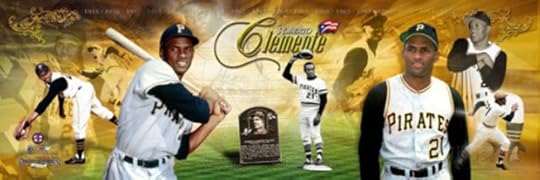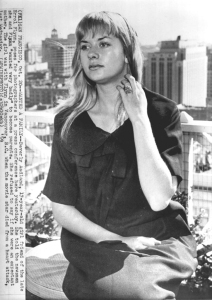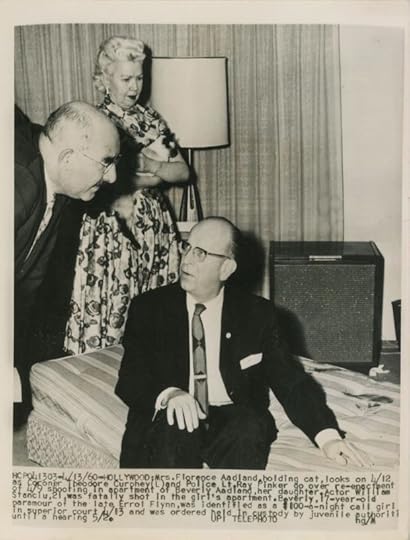Robert Matzen's Blog, page 14
March 23, 2016
Maltin at the Bat
I grew up with Leonard Maltin. I don’t mean we flipped baseball cards and caught tadpoles; I mean one of my go-to books when I became interested in classic Hollywood as a teenager was the first book he wrote, Movie Comedy Teams detailing the Three Stooges, L&H, the Ritz Brothers, and my faves, the Marxes. I haven’t opened that book in years, but I still remember the narrative and every photo and caption because I read that book over and over and over.
Maltin was a child prodigy in film and began writing for Film Fan Monthly at the age of 13, then took over that periodical (at age 16) and ran it for 9 years. From there he began releasing his movie guides and became an on-air critic for Entertainment Tonight. Is there anyone among my readers who hasn’t owned at least one edition of Leonard Maltin’s Movie Guide and consulted it before watching a picture to see how many stars Leonard gave it and why? In those dark times before the internet, there was nowhere else to find a thumbnail description of even something as obscure as The Secret Mark of D’Artagnan without Maltin and his guide. Today there’s imdb and Wikipedia, but back then, there was Maltin. Period.

Hollywood author and critic Leonard Maltin, now aboard the Mission team. (Photo by Jessie Maltin)
Leonard Maltin is a pop culture phenomenon, a guy who remains after all these years a big kid when it comes to movies, and I’m happy to report this particular phenom is writing the foreword for my just-completed book, Mission: Jimmy Stewart and the Fight for Europe. It occurred to me that I could really use Maltin’s insights into Stewart, the war, and subsequent effects on his career. Leonard said he might be interested in such an assignment, send along the manuscript; so I did. I guess what he read was OK, because he said yes.
I’ve been giving a final look to the narrative the past few days because soon it will go off for galleys and I want it to be right—you know, t’s crossed and i’s dotted and all that. It’s easy to get so lost in the process that I’ll be sitting there and it’ll occur to me, “Wait, did I write that? I don’t remember writing that.” It is becoming a descent into madness among 117,000 words. There are places that make me laugh, give me chills, and reduce me to tears, all of which I consider to be good signs because the same thing happened with Fireball. It’s a different kind of a book, though, a different story and a different protagonist. Lombard was sexy and vivacious, someone you wish you could have known or at least experienced once. Stewart was an aloof man who was there and not there at the same time, an introvert without much to say who kept his significant intensities on the inside, and a guy who, as he aged, hid behind the persona he had created for the Tonight Show and other public outlets. He became what people expected to see, and behind his blue eyes were 50,000 memories of the war that he kept locked away and never related to anyone. The reason Mission is necessary is specifically because he wouldn’t talk, and what I discovered was that in refusing to let Hollywood exploit his wartime service for publicity purposes, he turned out the spotlight on a terrific cast of characters surrounding him in the Second Combat Wing of the Second Bombardment Division of the Eighth Air Force. You’re about to meet some great guys in Mission, guys Stewart knew and commanded, guys who in talking about their lives in combat allow us to know what Jim Stewart did in the war, who he flew with and against, and who died beside him. He wouldn’t tell us, but others tell us. We have these guys and the combat records, and from a great number of sources, including survivors who flew with him, I was able to recreate the war as Stewart knew it. The result is an adventure more fantastic than anything he ever enacted on-screen. In fact, it’s an adventure that could only be recreated today in a CG universe, at which point you wouldn’t believe it really happened. I assure you, it did.
Into this mix of Hollywood and war is about to step Leonard Maltin to provide his thought-provoking perspective, and the coolest thing of all? I get to be the first to read it.

Jim sports the Croix de Guerre, a medal awarded to all Eighth Air Force combat veterans at the end of the war. (Photo courtesy of the Jay Rubin Collection)


March 5, 2016
Rendering in 3D
I sat at the barber shop yesterday staring at a poster of the late Roberto Clemente framed on the wall. The shop is decorated with framed art of Pittsburgh sports heroes. The Clemente print showed various views of the one-time Pirates baseball star and I thought back to my youth sitting in the first row of the right-field bleachers watching Clemente up close. I know I’ve mentioned before that my sister would take me and Roberto knew her by name. Between innings when it was quiet he would talk to us in the stands and I remember this guy in brilliant, full-color 3D when he was more than a memory and a poster on a wall. Sitting there thinking about how long ago that was now made me both sad and nostalgic–we’re here on this earth for what really amounts to such a short time; it’s important to make each day count.

The poster on the barber shop wall.
Right now I’m busy trying to turn Capt. Jim Stewart back into a 3D human who flew in combat in World War II. The manuscript for Mission: Jimmy Stewart and the Fight for Europe is now in final editing and I’m doing things like chapter notes, photo captions, and acknowledgments. I’m very happy with the book and think it will answer a lot of questions about Stewart’s service during the war. You want to talk about action and adventure; be sure to wear your safety harness and take your Dramamine because you’re in for quite a ride at 20,000 feet. Mission cleanup is why I’ve been so quiet this past month, because there’s a lot going on and not enough time. (Commercial plug: Look for the 400-page hardcover Mission, including 16 pages of rare photos, on Amazon and at a bookstore near you beginning October 24!)
For now I’d like to point you to an interesting Journeys in Classic Film think piece on Errol Flynn’s 1939 super-western, Dodge City. I also read this article at the barber shop (it was a long wait). I just loved being able to enjoy a fresh and thoughtful interpretation of this 77-year-old near masterpiece; it’s one of collections of words that makes me say, I wish I had written that. Actually, I wish I were smart enough to write that.
Enjoy, and I’ll be back soon with fresh material.

Errol and some of the boys.


February 9, 2016
Paradise Missed

Dakota Fanning as Beverly Aadland and Kevin Kline as Errol Flynn in the fanciful and largely unseen “The Last of Robin Hood.”
I finally got around to watching The Last of Robin Hood, the 2013 curio made by Wash Westmoreland and the late Richard Glatzer and starring a powerhouse threesome of Kevin Kline, Susan Sarandon, and Dakota Fanning. When word of this production got out, fans of the late Errol Flynn asked: If you want to make a picture about Flynn, why focus on the last two miserable years of his life? Why not tell the story of Errol in his heyday? Well, it’s obvious that…
Actually there’s nothing obvious about why this film was made; I sat as it unspooled wondering who invested money in this production, and how the stars were convinced to participate, and who was expected to go see it, and why. It couldn’t get a distribution deal for the longest time and then when it did, release was limited. The very fact that I wrote two books about Flynn yet it took me a couple years beyond release to bother to see it says something about the desirability of the product, well, in this house, anyway.

The real Beverly Aadland soon after Errol’s death. She was a natural beauty and by all accounts a sweet soul. And I have to ask: Does she look 17 years old to you? Maybe a tad bit older?
In a nutshell, the plot centers around a Hollywood hopeful named Beverly Aadland toiling away at Warner Bros. in 1957, when she is spotted by Errol Flynn. He’s back on the lot where he was once a contract star, this time playing near-death John Barrymore and way past his prime. Errol arranges to meet Beverly, has sex with her against her will (assuming as he does that she like all other females wants to feel the sword of the master). Then she falls for him and the romance of their lives ensues. But there’s a catch: he’s 48. She’s 15. She swears she’s legal but she isn’t; her stage mother Flo had arranged for a fake birth certificate to back up the fact that this girl looked much older than her years. Really she did. When the real Beverly was 13, she already looked like a full-fledged adult.
There are things to like about The Last of Robin Hood. The production design has a nice 1950s feel, with icily muted color tones. The screenplay has a cheeky vibe for the first 45 minutes. The stars are perfect. These are Academy Award performers letting it all hang out and they nail it—down to Kevin Kline’s rendition of Flynn’s odd Aussie/Tasmanian/English accent. Dakota Fanning is Beverly Aadland—we get that she feels Beverly at a soul-to-soul level. Beverly’s mother, Florence Aadland, could only ever wish she were the babe-version portrayed by Susan Sarandon, a basically good-hearted mom (or is she?) who can’t resist the lure of Hollywood. Flo has no idea how overmatched she is by people like Errol Flynn.

In a scene vividly and accurately capturing reality, Fanning as Aadland is ambushed by reporters in the wake of Flynn’s death by heart attack.
As for Kevin Kline as Flynn, I (and many others) always thought he would make a perfect Errol from the days of The Pirates of Penzance. But the years passed and it kept not happening. He absolutely nails it in Last, as in, he depicts the guy his fans always imagined Errol Flynn should be at age 48, this elegant, dashing, aging-but-dignified movie star back to conquer Hollywood one last time.
At one point early on Beverly sees Flynn’s jaggy question mark stitched into some garment he’s wearing and asks what it means. And he says it means he questions things, but this throwaway moment had the potential to represent a theme in the picture: The jaggy question mark represented his cynicism about those people who were out to get him, people like the reporters who went after Flynn for living with an underage lover. How hard would it have been for the writers/directors to have tied the question mark into the scenes of “poor” Beverly collapsing as the press mobbed her at the airport after Errol’s sudden death from a heart attack?
Oh, sorry. Spoiler alert.
A disclaimer at the beginning of the picture would have helped: Any resemblance between this Errol Flynn and the real one is entirely coincidental. In truth, you didn’t want to spend an evening with the real Flynn by this point in his life. He was so debauched people didn’t recognize him—not even his frequent co-star and past love, Olivia de Havilland. He was by now the sum of thousands of bad decisions in his life, including washing down hard drugs with a fifth of vodka a day to ease the pain of having no money and few prospects. And he was a mean man, as described by Earl Conrad in Errol Flynn: A Memoir. Only an enabler would say that Errol Flynn was screwed over by life; Errol screwed himself over with all those bad decisions, one of them being to chase teenaged girls around.

Sorry folks, but this is the real Flynn in 1959. Paunchy, boozy, miserable. Bev looks awesome, though, and check out the caption where it says she’s 22.
Which leads me to the most perplexing thing about The Last of Robin Hood. Why in the world did the filmmakers choose this story about a man nearing 50 but looking older (cue the creepiness factor) having a sexual relationship with a girl who ages from 15 to 17? In our politically correct world, are you kidding?? We can’t feel sympathy for the predatory male, or for the girl who’s date-raped but stays with her attacker, or for the mother who wants her daughter to be a good girl on the one hand but play the Hollywood game on the other. It’s a fact that Flynn and Aadland had a close relationship, and a successful one—proving once again that you fall in love with who you fall in love with, and after a certain point, if the love is grand enough, it’s up to the world to deal with it. Flynn-Aadland was a salacious story when Flo Aadland sold it in The Big Love, a sleazy paperback published shortly after Flynn’s death. In our more enlightened age—actually I don’t think it’s more enlightened at all; I think it’s a more judgmental age and just as morally uptight—the Flynn-Aadland story simply couldn’t have succeeded in feature motion picture form as anything other than somebody’s tax write-off. It’s just a shame the three leads were wasted in this sanitized, superficial little fantasy version of complex, real-life happenings.
Earl Conrad got to know Flynn when Errol came down with writer’s block as he was drafting his memoirs; his publisher, Putnam, called Conrad in to save the day as Flynn’s ghostwriter. It’s interesting that the writing of My Wicked, Wicked Ways wasn’t interwoven into the plot of Last because this ultimate project of Flynn’s life engaged him just as much as Beverly did. In fact there’s your movie—why the hell didn’t they make this one: Flynn, the writer of two previous books and numerous pieces for major magazines, is now incapable of writing his greatest book of all. And as he works with Conrad, whom he despises, Flynn the actor and man comes face to face with a lifetime of demons, until, grudgingly, he begins to accept Conrad’s help, and then genuinely comes to admire and rely on him. I understand this story well because I knew Earl Conrad and we talked about it often, and a compelling drama it was as Flynn found redemption and then, finally, his missing words, with Earl’s guidance. I think a lot of people might have paid money to sit down and watch that one, with Kevin Kline as Flynn, Dakota Fanning as Beverly, and you name the Conrad. Matt Damon, maybe. I’d have been first in line and cried a river.

Beverly had a difficult time of it after Errol’s death, as this caption attests. Depicted with the coroner and police lieutenant is, wait, not Susan Sarandon, but the real Florence Aadland.





